Laura McNeill's Blog, page 2
May 3, 2018
Best Writing Books, Part 2
I’m back today with three more “best writing book” recommendations.
Two of today’s choices may seem a bit out of the ordinary, as they fall in to the film and screenwriting industry category, but I have found that both are exceptional when it comes to capturing the magic of story construction and creating compelling characters.
[image error]This first book, Story: Substance, Structure, Style and the Principles of Screenwriting[image error], was recommended by a successful playwright friend of mine, and I soon found that it was a great choice! McKee is a master of screenwriting, and puts on writing craft seminars (30 hours over 3 days) that command upwards of $450.
Story: Substance, Structure, Style and the Principles of Screenwriting[image error] was born from those seminars and many big Hollywood names — including Quincy Jones, Diane Keaton, and David Bowie – are known fans of his work. McKee, most refreshingly, doesn’t talk about making money from movies. Rather, he gets down to the basics of storytelling – crucial guidance no matter the story form or genre.
[image error][image error]The name of the bestselling second book I like to recommend always gets a look of surprise or a chuckle from friends.Save The Cat! The Last Book on Screenwriting You’ll Ever Need[image error], of course, refers to the act or behavior that makes a main character likeable and relatable (which would usually happen if he or she saved a cat!)
The author, Blake Snyder, who tragically passed away in 2009, was a great proponent of helping writers develop stories well, in screenwriting, or in any medium. Save The Cat! is chock full of tips and tricks, including Snyder’s “Mastering the 15 Beats” worksheet.
[image error] [image error]
The third book, Stein On Writing: A Master Editor of Some of the Most Successful Writers of Our Century Shares His Craft Techniques and Strategies[image error], is a classic, written in 2000, and often called “the book of useable solutions” (Library Journal).
Sol Stein, the author, is a well-respected author, editor, and lecturer on the craft of writing. He is quoted as saying, “the best reading experiences defy interruption,” which in essence, should be the main goal of every author – getting the reader to open the book, dive in, and refuse to stop turning pages until the very last word. Highly recommended!
I hope you’ve found these two “best writing books” posts helpful! You can find the first one here: Best Writing Books, Part 1.
What are your go-to writing books? I’d love to hear about your favorites!
~ Laura
April 29, 2018
Best Writing Books, Part 1
I’m often asked about my favorite books on writing. I have shelves of books on writing, editing, publishing, story structure — you name it. But, when I’m asked to recommend the best writing books, the same volumes comes to mind.
[image error]On Writing: A Memoir of the Craft[image error]: My all-time favorite and number one choice is Stephen King’s book, On Writing. For those who might be raising an eyebrow because they aren’t fans of the horror genre … this book is the BOMB! I find it funny, witty, heart-felt, and spot on with advice. Half of the book is a memoir, but it gives credence to the fact that King spent years struggling to get anything published, which seems impossible for the author who’s authored so many books that I can’t name them all. The other half of the book gets down to the nitty-gritty of writing, which can be summed up succinctly: (1) Read a lot, (2) Write a lot, and (3) When you are writing, get your butt in your chair and keep it there.
I agree with King. As an author, reading as much a possible gives you fuel. It revs up creativity, inspires, makes you think, and makes you laugh or cry. As for the keeping your butt in a chair statement, it might sound funny, but it’s excellent advice. No one, unfortunately, will write your novel for you. It takes dedication and work, persistence day after day, especially when you’ve hit 40,000 words and you don’t see the end of your novel in sight. Is it worth it? To me, absolutely! Is it hard work? No doubt about it.
[image error][image error]Story Engineering[image error][image error]: Another all-time favorite is Story Engineering by Larry Brooks. Brooks is a master at breaking down story structure. Story structure is how your novel is put together, chapter by chapter. Yes, you can read Joseph Campbell’s The Hero with a Thousand Faces (and at some point, you probably should), but I find Brooks logical, funny, and sensible when it comes to the nuts and bolts of putting a book together well.
As the title might imply, the book breaks down story structure mathematically. (I know, I said the word “math” to right-brained folks!) But his math is mainly in percentages — and it is frankly fascinating the way he looks at popular fiction and movies. He uses a “take your favorite book off the shelf and flip to page __” to make his points, and I spent several evenings doing exactly that (while exclaiming, “my gosh, this really works!”).
Brooks also has a wonderful blog with loads of great advice – storyfix.com – but I highly recommend checking out this book to get it all in one place.
[image error]Write Your Novel From The Middle: A New Approach for Plotters, Pantsers and Everyone in Between[image error]: James Scott Bell is also a brilliant advisor for fledgling and experienced writers. I was delighted when I found this little book – a goldmine of advice in just 92 pages. It’s actually so slim that I lost it for a week and had a panic attack until I found it lodged inside one of my other books.
The great thing about this book is that it doesn’t matter if you are a “plotter” or a “pantser” (you plot out your novels or you just sit down and start writing by the “seat of your pants”). James Scott Bell argues that the best place to locate the heart of your novel is in the middle.
And I’ve found, no matter if I have my novel outlined and ready to go (I’m a plotter), it’s always a good idea to consult this little blue book for perspectives, a gut check, and to flesh out any remaining ideas. If you have just a nugget of an idea, Write Your Novel From The Middle is a great way to determine if you have enough of a story to write 80,000 words about it. Is your heroine the right heroine? Is the challenge real? Does the journey matter?
James Scott Bell has many, many other books about plot, structure, dialogue, and suspense. Each is written in an easy, conversational way that makes you feel as if you are chatting with a good friend.
I have three more books I’d like to share — look for those in “Best Writing Books: Part 2!” Have a great week!
– Laura
June 17, 2017
Hello world!
Welcome to My Blog. This is your first post. Edit or delete it, then start blogging!
April 21, 2017
Final Project
Hi Everyone!
So sorry to miss the final class due to unforeseen circumstances. Dr. Major graciously allowed me to record a video overview of my project.
Here’s a look – and it’s only 4 minutes long!
You can also connect with me on Portfolium and view my work there. My page is https://portfolium.com/ljmcneill33.
Hope everyone has a wonderful summer!
Laura
April 12, 2017
Final Project Update
In preparation for presenting my final project poster, I am uploading and organizing my artifacts in Portfolium (see below!). Over the next week, I plan to also add:
UA Courses & Details
Professional Organizations
Jobs I’ve held and responsibilities
Add additional artifacts from my positions at UA and SHC
Organize the existing artifacts properly
I look forward to sharing my final project and getting feedback for improvement!
Laura
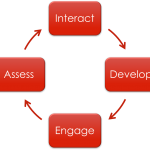

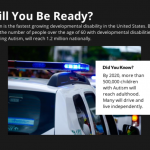
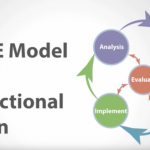


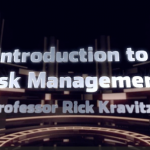
April 6, 2017
Personal Learning Environment
Here’s a look at my Personal Learning Environment created in Popplet. Use the link or view the PDF to see the details.
http://popplet.com/app/#/3986297
Personal Learning Environment {PDF}
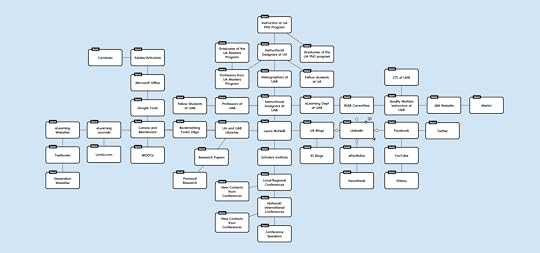
Looking forward to seeing everyone else’s PLEs. I’m sure you will all have some great ideas to share!
Laura
Teaching Observation
I was fortunate to be able to observe two of my favorite professors at UAB. Carleton Rivers teaches nutrition to UAB graduate students and Deek Cunningham is an instructor in the UAB occupational therapy department.
I’ve attached my observation forms here, as they are quite lengthy!
Carleton Rivers Teaching Observation
Deek Cunningham Teaching Observation
Laura
March 12, 2017
Review: Classroom Assessment Techniques
Classroom Assessment Techniques by Angelo and Cross is not a book about testing students. Rather, Angelo and Cross set out to help individual college teachers “obtain useful feedback on what, how much, and how well their students are learning.” (p 3) Specifically, the authors are attempting to assist instructors bridge the gap between what is being taught and what is being learned – what the authors call a “a continuous flow of accurate information on student learning” throughout the semester – before it is too late to solve any problems or issues.
I found it enormously helpful for the authors to explain their purpose of classroom assessment, their seven characteristics of classroom assessment (formative, context-specific, etc.), and their seven basic assumptions of classroom assessment, upon which they designed their model of classroom assessment (explicit goals and objectives, formative feedback, intellectual challenge, etc.).
The Teaching Goals Inventory is one area that I will explore before I begin teaching this summer, as I believe, as the authors suggest, that it will be helpful for me to become more aware of what I would like to accomplish, to locate assessment techniques, and to provide a starting point for discussion of teaching and learning goals.
Before entering into the second section of the text, which provides 50 specific classroom assessment techniques in areas including course related knowledge and analysis as well as critical thinking and problem solving, I found it helpful that the authors pointed out how they selected each individual classroom assessment technique (CAT) to include in the textbook. Their seven criteria included:
Is it context-sensitive?
Is it flexible?
Is it likely to make a difference?
Is it mutually beneficial?
Is it easy to administer?
Is it easy to respond to?
Is it educationally valid?
The authors are quick to point out that while each of the seven criteria had to be met for the CAT to be included in the text, not every CAT would be equally effective for every situation, as not every instructor will have the same teaching goals, even for the same course.
Each of the 50 different classroom assessment techniques (CATs) are discussed in terms of applicability, step-by-step instructions, level of difficulty, and field in which the CAT may be used. Each assessment follows a format that includes 14 points including a description of the technique, its purpose, the exact steps to follow to implement it and the pros and cons of using it.
Many of the activities provide quick and easy ways to identify your students’ misconceptions, and to make sure everyone is on the same page. The very commonly used “muddiest point,” “minute paper,” and “one-sentence summary” are among the assessment techniques ones that I will consider implementing over the next several semesters, as well as the annotated portfolio as a way for students to collect and house samples of their work to show potential employers. I also have an interest in using classroom opinion polls as a way to gather information about when and where to start teaching, and and double-entry journals as a way to establish not only a student’s ideas and assertions about assigned course readings, but also as a way to discover why a reading or certain information is personally significant. I believe that both of the latter exercises would be excellent ways of gaining insight and understanding without the pressure or stress of a group project or individual presentation, making it (hopefully) more authentic.
The final section covers what the authors have learned from six years of work with classroom research and what they believe the next steps will be in this area of education, including classroom research by dedicated social scientists as well as relating teachers’ personal theories about learning with formal theories advanced through decades of research.
There is also an extensive list of resources at the end of the book, including the Teaching Goals Inventory, Self-Scorable Worksheet, and comparative data on the Teaching Goals Inventory from both community colleges and four-year schools. Overall, I believe this is a valuable and easy to use reference for instructors with varied levels of experience.
Review: Teaching at Its Best
I found Teaching at Its Best by Dr. Linda Nilson to be another great resource in preparation for college and university teaching. True to the book’s description, Teaching is “an essential toolbox of hundreds of practical teaching techniques, formats, classroom activities, and exercises, all which can be implemented immediately.”
In particular, I believe that the author set the right tone at the beginning of the book by stating well-researched principles about how people learn. Those include that people “learn when they are motivated to do so by the inspiration and enthusiasm of other people in their lives” (Feldman, 1998), they learn “when they are actively engaged in an activity, a life experience,” as well as when they “receive the material multiple times but in different ways,” and that people “learn better when the material evokes emotional and not just intellectual or physical involvement.” Keeping these principles in mind is of utmost importance, in my opinion, no matter what subject is being taught, despite differences in student body profile, and aside from whatever tools and/or technology is being used to convey the information.
Though the book contains a plethora of useful techniques and recommendations, I found the following the most interesting and impactful for what I would like to achieve with students:
Writing Outcomes – Ensuring that an instructor has crafted a measureable statement of exactly what students should be able to do after completing the course, as well as criteria for assessing the performance (p 18)
First Impressions – Laying out expectations, thinking about “class activities that model the level of student engagement you have in mind for the rest of the term” (p 45)
Motivating Students – The text references Bandura’s Social Cognitive Model (p 54) which states that the more value students give to our learning material, relative to meeting other needs in life, the more motivated they will be to learn.” Nilson references giving students control and choice, which I strongly believe positively motivates students by allowing them to “buy into” the process and outcome.
Teaching Methods – I found the list of teaching methods in Chapter 11 to be a solid resource for connecting methods with learning outcomes, including suggestions like role play, project based learning, case studies, and fieldwork (p 106-107).
Experiential Learning – Taking the teaching methods concept further, Nilson expands upon how to successfully execute teaching methods like debates, panel discussions, press conferences, role playing, etc. I found this particularly valuable in that research documents that such experiential learning methods…ensure “higher student motivation, more learning at higher cognitive levels, greater appreciation of the subject matter…and longer retention of the material” (Berry, 2008).
While there are many positive sections of Nilson’s text, I do feel that the book was lacking in at least two areas: Formative feedback and online learning.
Formative Feedback – While the text covered summative feedback in great detail, the book devoted less than a page to formative feedback. I believe that a chapter dedicated to formative feedback is in order – or at the very least, least several more pages of research and information about the benefit of providing students feedback about their work in progress. Doing so allows students time to think, rework, and correct any “missteps,” receive constructive criticism from the instructor, and have the opportunity to clarify points that were unclear, all which help maintain student engagement and motivation.
Online learning – Although the text was written in 2010, I would have expected more of the information to focus on both face to face and online learning. While there is some mention of online coursework, more information on online techniques, formats, activities and exercises would certainly be of benefit to readers.
Overall, I enjoyed the book and will definitely keep it as a resource. I look forward to seeing what the fourth edition of the manual might include.
March 10, 2017
Final Project Proposal
I will be completing my teaching portfolio for the final project. I will be using Portfolium, which is a product relatively new to the University of Alabama at Birmingham. Portfolium has a LinkedIn feel, with sections and room to display projects and videos. It also allows colleagues to connect and follow with one another.
My teaching portfolio will include the following sections:
Introduction – This section will include my photo, a banner, a short bio, contact information, and my current degree program, as well as the link for anyone to access my Portfolium, my email, social media contacts, and other contact information.
Artifacts – These include projects created with Articulate 360, WordPress, Wix, Prezi, Camtasia, Adobe Premiere, Piktochart, including videos, interactive websites, blog entries, YouTube, PPT, instructional lesson plans, grant applications, as well as Canvas and Blackboard courses I have developed and/or taught.
Work Experience – This will highlight my Instructional Design positions and any teaching and/or workshop experience.
Courses and Certifications – These will include my courses from the PhD in Instructional Leadership and Technology, as well as my Masters Degree in Interactive Technology.
Publications – Here I will showcase my published work, including articles, books, essays, etc.
My Curriculum Vitae – This will include the presentations I have given for various institutions and conferences, as well as grants received, papers published or in progress, conference presentations, and poster presentations.
Teaching Philosophy – This section will include the Teaching Philosophy developed for AHE 603.
Connections – I will use this area to connect with my colleagues in education and industry.
There are also sections for accomplishments, clubs, affiliations, and programs, which I will fill in as appropriate.
This is a new program for me, so I am still learning my way around. I believe that every student at UA was given access to this free tool, so I encourage you to check it out as well!
My Link: https://portfolium.com/ljmcneill33



